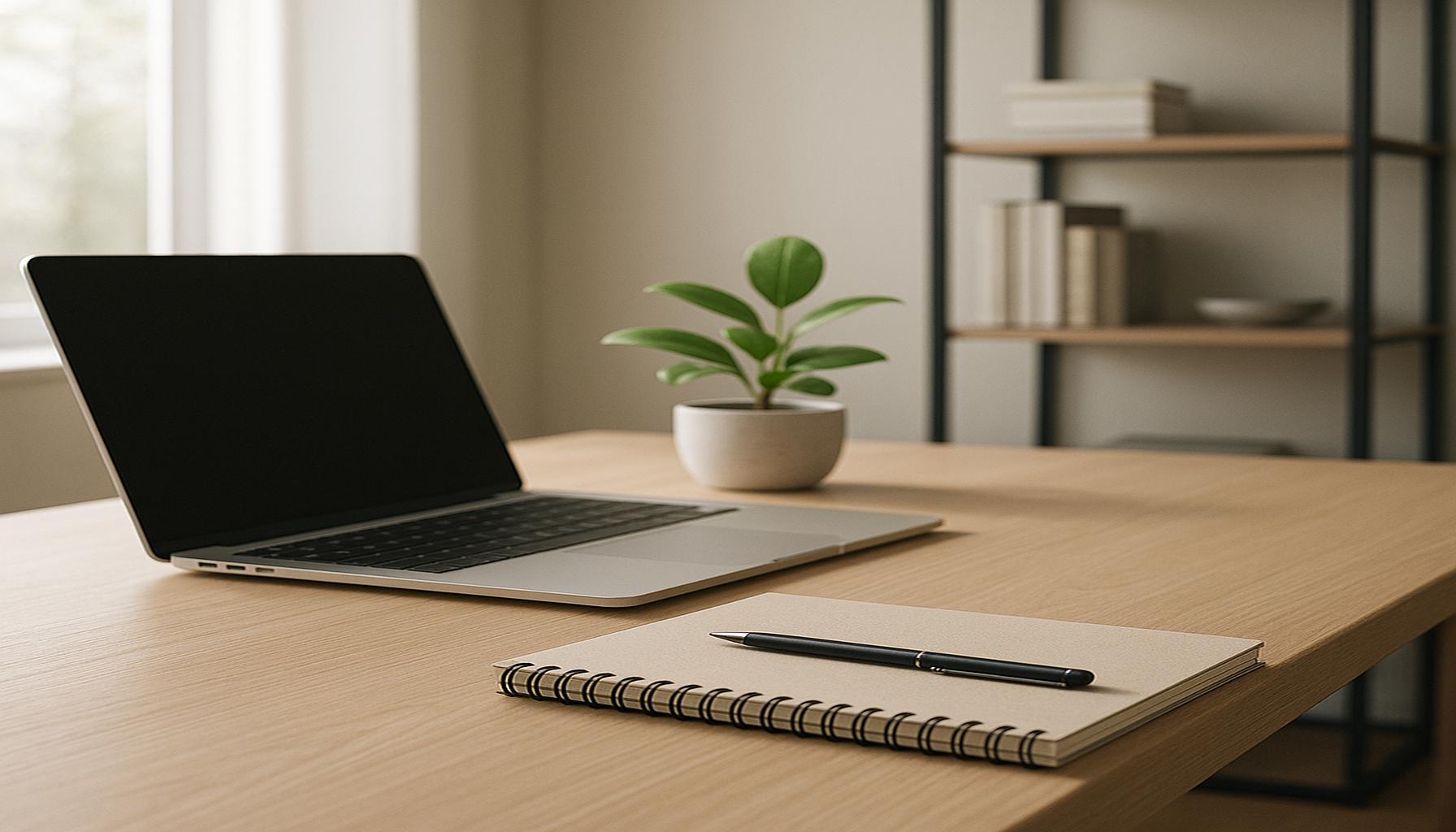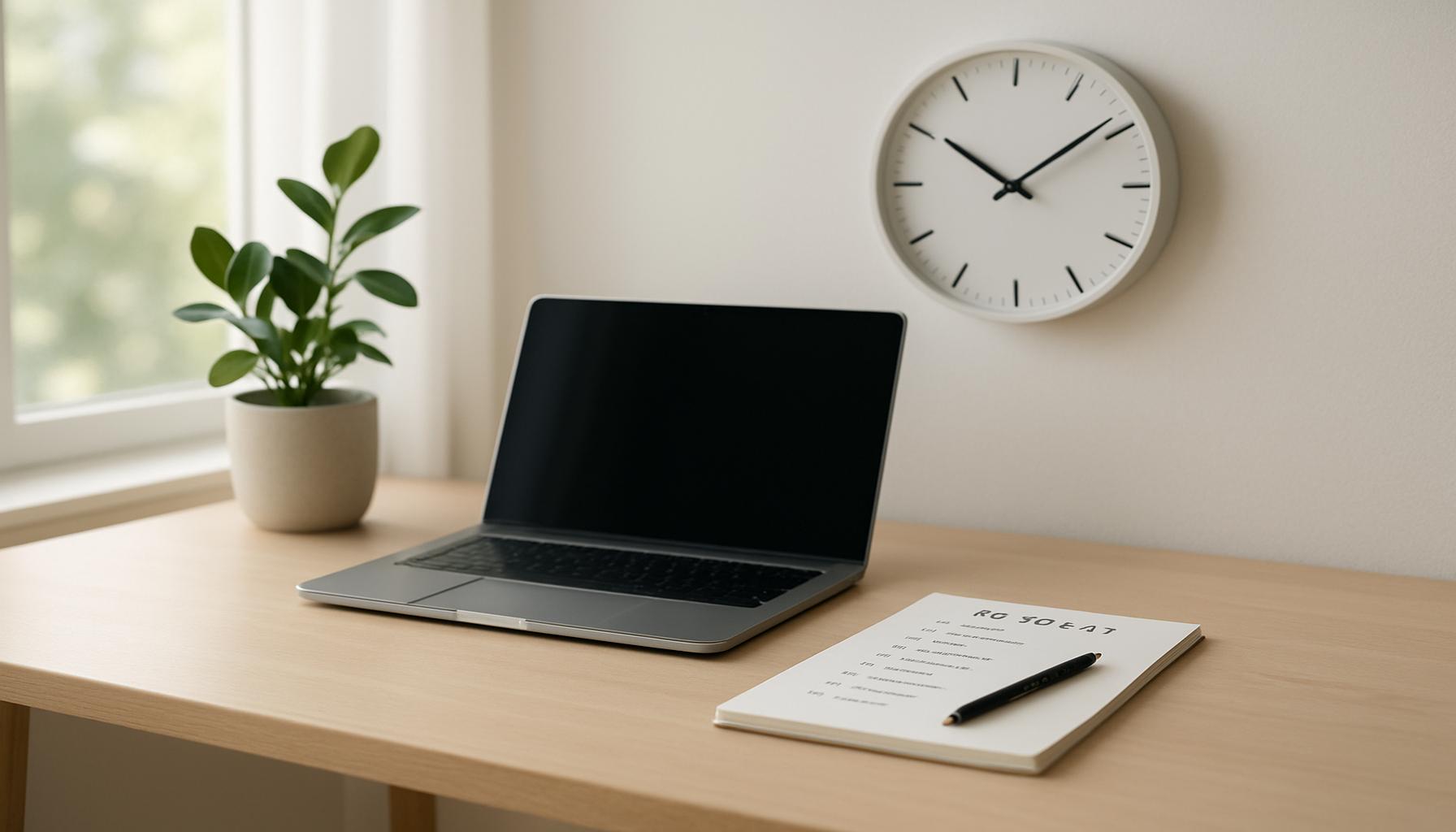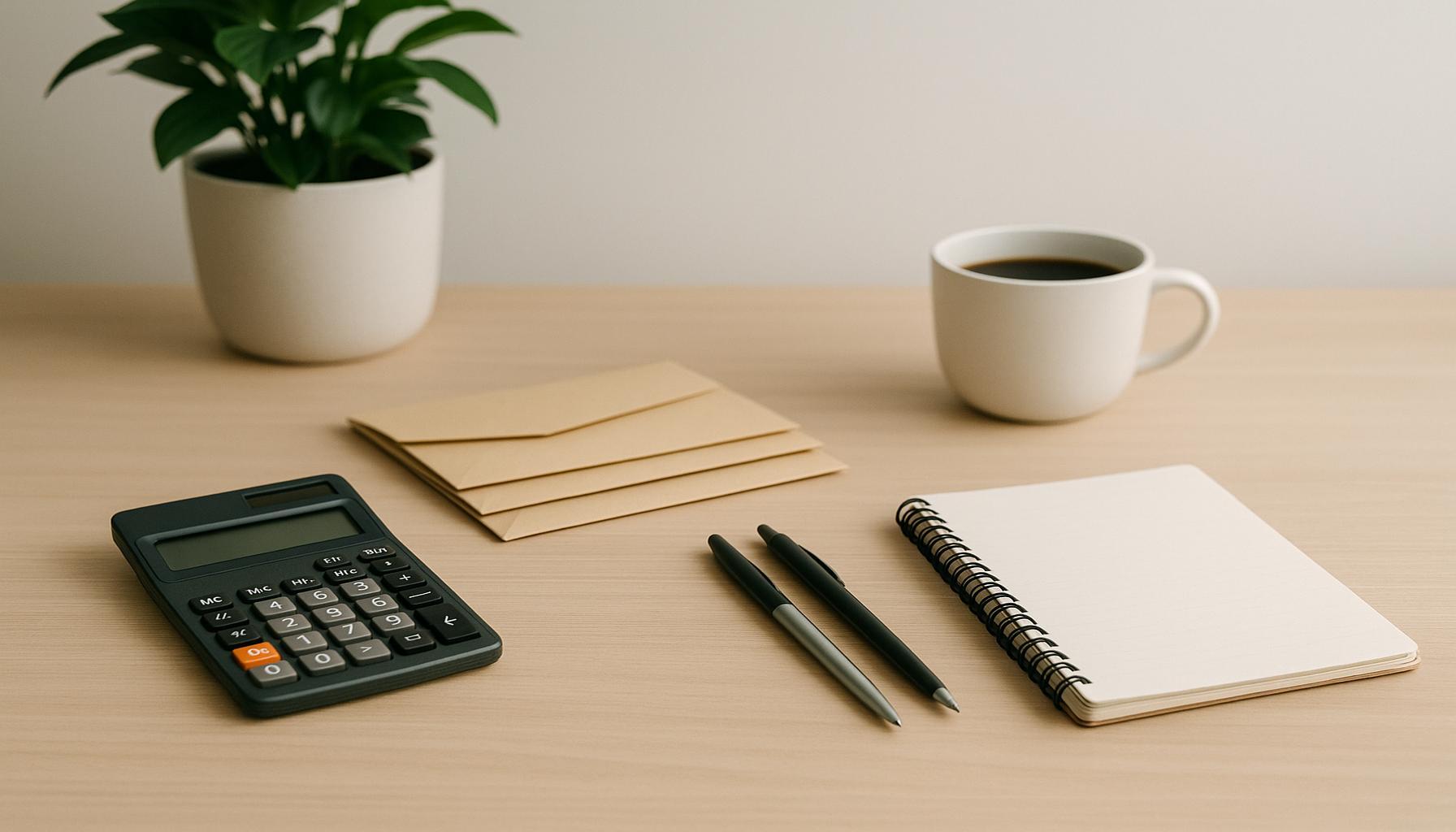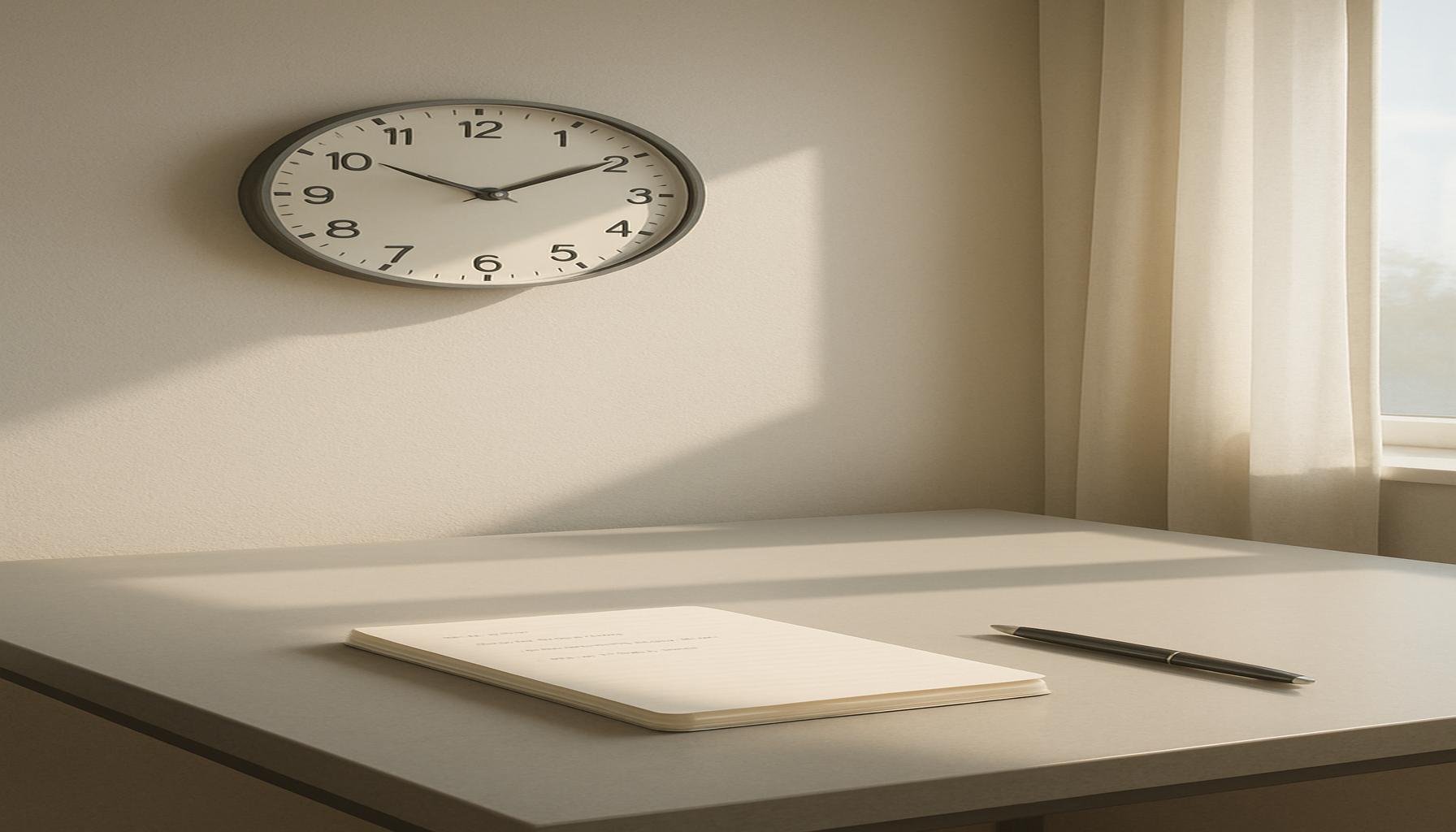Boost Work Productivity Minimalist Organization Strategies

Unlocking the Power of Minimalism in the Workplace
In today’s fast-paced world, finding ways to enhance productivity is more important than ever. One effective approach to achieving this is through minimalist organization. By embracing simplicity and decluttering both our physical and mental spaces, we pave the way for increased focus and efficiency at work.
Minimalism is not just a lifestyle choice; it is a powerful philosophy that encourages individuals to prioritize what truly matters. Implementing this mindset into your work life can lead to:
- Reduced distractions for better concentration.
- Streamlined processes that save time and resources.
- Enhanced creativity through a clearer mental landscape.
As you navigate through this article, you will uncover the Top 5 strategies designed to boost your productivity via minimalist organization. Prepare to discover practical tips that can transform your workspace into an environment of clarity and effectiveness.
Top 5 Minimalist Organization Strategies to Improve Workplace Productivity
In today’s fast-paced world, the feeling of being overwhelmed can easily seep into our daily work lives. Many attributes of our work culture—constant connectivity, the pressure to multitask, and information overload—can lead to reduced efficiency and increased stress. Minimalism, particularly in the workspace, offers a refreshing antidote. By streamlining tasks and environments, we can reclaim our focus and improve productivity. Below, discover the top five minimalist strategies that can transform your productivity, from decluttering your physical environment to embracing the power of routines.
5. Declutter Your Workspace
Imagine sitting at your desk—a clutter-free zone, surrounded only by the essentials. This is the power of a minimalist workspace. Starting with decluttering is crucial as physical clutter directly impacts mental space and clarity. NASA published a study indicating that physical clutter in your surroundings competes for attention, leading to decreased performance and increased stress.

Begin by categorizing the objects in your workspace:
- Essential: Tools and supplies you use daily, such as your computer, notepad, and pen.
- Occasional: Items like reference books you use once in a while. Store these neatly but away from the immediate workspace.
- Unnecessary: Old documents, cables, or decorative items that serve no real purpose. Consider recycling or donating these.
Rethink how you perceive work essentials. By eliminating the unnecessary, you not only enhance your ability to concentrate but also experience heightened creativity and decision-making efficiency.
4. Prioritize Tasks with a Minimalist Approach
The art of task management can be streamlined into a simple, minimalist approach, focusing on quality rather than quantity. The key is to cultivate focus on fewer priorities. Research by the American Psychological Association highlights that multitasking hinders productivity dramatically, with people losing up to 40% of their productive time when switching between tasks.
Consider adopting a minimalist task prioritization approach by implementing the following strategies:
- Limit your to-do list to the top three key tasks that have the highest impact on your goals.
- Use time-blocking techniques to assign dedicated intervals for these tasks, reducing the risk of interruption and distraction.
- Reflect on what you’ve achieved at day’s end, noting improvements and adjustments for tomorrow.
Over time, this method reduces the mental burden of a packed schedule, reducing stress and allowing for more deliberate and effective work.
3. Implement Digital Minimalism
We are inundated with digital stimuli, making it easy to lose focus amidst the noise. Practicing digital minimalism entails carefully selecting the digital tools that truly support your work while eliminating the rest. According to a study by RescueTime, an app tracking usage statistics, employees spend only 2 hours and 48 minutes a day on productive work while the rest is lost to meeting organization, browsing, or handling redundant messages.
To cultivate a streamlined digital environment:
- Audit your software and applications, removing those that don’t directly aid your work.
- Consolidate necessary functions into fewer apps—choose those that offer multifunctional capabilities.
- Mute distractions by managing notifications—only allowing alerts for essential communications.
With a clean digital space, you can engage more deeply in your work, fostering a productive digital workspace and maintaining focus throughout the day.
2. Create a Simplified Filing System
Both physical and digital documents can overwhelm if not managed efficiently. A simplified filing system helps maintain organization and ease of retrieval. According to a study conducted by Brother International, document clutter costs companies approximately $8,000 annually per employee through time lost in searching for information.
To establish a user-friendly filing system, consider:
- Implementing a consistent labeling methodology for both physical folders and digital files to ensure quick access.
- Maintaining as few folders as possible—segregate only by broad, essential categories and regularly clear out obsolete files.
- Conducting bi-weekly reviews of files to discard outdated data, ensuring your system stays current and clutter-free.
An organized filing system minimizes time spent searching for documents, reducing frustration and reclaiming time for important work tasks.
1. Embrace the Power of Routine
Embracing a routine is perhaps the most powerful method of integrating minimalism into your life. A routine framework eases decision-making fatigue by automating daily processes. According to a research paper published in the journal of Clinical Psychology Review, routines can alleviate anxiety, promote well-being, and increase work effectiveness.
Incorporate a minimalist routine by:
- Setting a firm start and end time for your workday to draw clear boundaries between personal and professional time.
- Scheduling regular breaks to refresh your mind, crucial for sustaining high energy and creativity levels.
- Allocating deliberate time for weekly planning and reflection to assess achievements and recalibrate goals as necessary.
Ritualizing your day-to-day functions in this manner enhances discipline and ensures that cognitive resources are preserved for critical tasks, thus improving productivity significantly.
In conclusion, these minimalist strategies—not only organizational tools but transformative lifestyle changes—can significantly impact productivity and satisfaction in the workplace. By embracing these methods, you pave the way for a stress-free, and notably, a far more efficient work environment. It’s time to start reimagining your workspace with these proven strategies for enhanced productivity.
| Category | Key Features | Advantages | Disadvantages | Who Benefits Most |
|---|---|---|---|---|
| Digital Minimalism | Focus on essential digital tools, limit distractions | Enhances focus and reduces cognitive load, allowing for deeper work. | Can exclude useful technology and tools if not carefully assessed. | Professionals needing to minimize distractions to enhance focus. |
| Streamlined Workspace | Organized workspace with limited clutter | Boosts productivity through improved mental clarity and organization. | May lead to limited inspiration if creative items are removed. | Anyone seeking a tidy environment to foster productivity. |
| Time Blocking | Allocating specific blocks of time for tasks | Increases time management and helps prioritize critical activities. | Can become rigid, leaving no room for spontaneity or urgency. | Individuals with busy schedules needing structured time management. |
| Task Simplification | Breaking tasks into smaller, manageable steps | Reduces overwhelm and enhances feelings of accomplishment. | Can lead to fragmentation of work, making it hard to maintain momentum. | Those feeling bogged down by complex tasks or responsibilities. |
In exploring various strategies for minimalist organization to enhance workplace productivity, distinct categories emerge, each with its own characteristics, advantages, and disadvantages. The above table provides a succinct overview, enabling readers to delve deeper into these methods. **Digital Minimalism**, with its emphasis on essential digital tools, guides professionals to limit distractions, paving the way for enhanced focus and reduced cognitive load. This method, however, requires careful consideration to ensure that vital tools are not omitted in the process.**Streamlined Workspace** highlights the importance of a clutter-free environment. This not only promotes productivity through mental clarity but also ensures that professionals can easily locate their materials. While it fosters a productive atmosphere, too much minimalism might stifle creativity if inspirational items are removed.Adopting a **Time Blocking** approach can drastically improve time management. By allocating specific blocks of time to tasks, professionals can prioritize essential activities. However, it’s crucial to remain flexible, as strict scheduling can negate the spontaneity required for tackling urgent issues.Finally, the strategy of **Task Simplification** serves to mitigate feelings of overwhelm. By breaking tasks into smaller, manageable steps, individuals experience enhanced satisfaction and a sense of achievement. Yet, this method can lead to fragmented work, which could disrupt overall momentum if not implemented with balance.These categories offer concrete ways to harness minimalism in the workplace, appealing to various individuals based on their unique needs and preferences.
Frequently Asked Questions About Minimalist Organization Strategies to Boost Workplace Productivity
What are minimalist organization strategies, and how can they enhance productivity at work?
Minimalist organization strategies focus on reducing clutter and distractions to create a more streamlined and efficient work environment. By emphasizing clear planning, prioritization, and eliminating non-essential items, these strategies help individuals focus better, make quicker decisions, and reduce stress. The key is to create a workspace where every item has a purpose, which, in turn, can significantly enhance cognitive function and task efficiency.
How can minimalism be applied in a corporate setting without losing essential elements of the work process?
Applying minimalism in a corporate setting involves balancing simplicity with required functionality. Begin by identifying the core activities and tools necessary for your team to function effectively. Maintain only those elements that contribute directly to goals and productivity. Utilize digital tools to minimize physical clutter and ensure that communication and project management processes are clear and streamlined. This approach not only maintains efficiency but can also foster creativity by reducing mental overload.
What are some simple steps to start implementing a minimalist approach in my workspace?
Start by decluttering your physical and digital spaces. Clear your desk of unnecessary items, and organize your computer files. Limit your digital notifications to reduce distractions. Focus on creating a daily schedule that prioritizes essential tasks and incorporates short breaks to sustain energy levels. By continually reevaluating and refining your workspace, you can maintain a minimalist setup that supports continuous improvement and adaptability.
Will adopting minimalist strategies at work impact my working style or habits?
Adopting minimalist strategies can positively impact your working style by encouraging more disciplined and intentional habits. It may challenge you to question the necessity of your current practices, leading you to identify and eliminate inefficiencies. Over time, these strategies can cultivate a work style characterized by clarity, focus, and heightened productivity, ultimately enhancing both personal and professional growth.
Conclusion: The Power of Minimalism in Boosting Workplace Productivity
In conclusion, embracing Minimalist Organization Strategies can significantly enhance productivity in the workplace. The core principle of minimalism lies in deliberately focusing on what truly matters by eliminating unnecessary distractions. In essence, this philosophy not only simplifies tasks but also offers greater clarity and efficiency.
Key Takeaways
- Decluttering Physical and Digital Spaces: By maintaining tidy workspaces, individuals can experience enhanced concentration and reduced stress levels.
- Prioritizing and Optimizing Tasks: Setting clear priorities ensures that essential tasks are tackled first, leading to effective time management and goal achievement.
- Embracing Simplicity: The adoption of straightforward systems minimizes complexity, fosters creativity, and drives innovation.
- Mindful Consumption: By being discerning in acquiring tools and resources, teams can avoid the pitfalls of excess and focus on utility.
- Integrating Routine and Flexibility: Establishing structured routines while allowing room for flexibility helps maintain a balanced and adaptable work environment.
The importance of possessing a minimalist mindset extends beyond just organizing spaces—it empowers individuals to streamline processes and embrace a more intentional approach to work. As many professionals worldwide seek efficiency in an ever-evolving work landscape, the integration of minimalist principles offers a compelling solution. In essence, cultivating such an environment can pave the way for increased productivity, satisfaction, and well-being.
As more research continues to emerge on the benefits of minimalism in professional settings, both individuals and organizations may find themselves inspired to explore these strategies further. Will you be among those who uncover the potential of minimalism to revolutionize your productivity?


